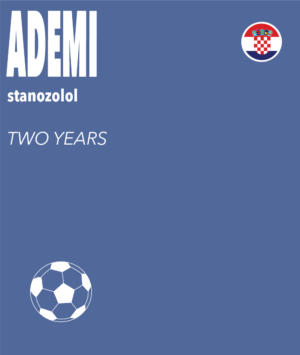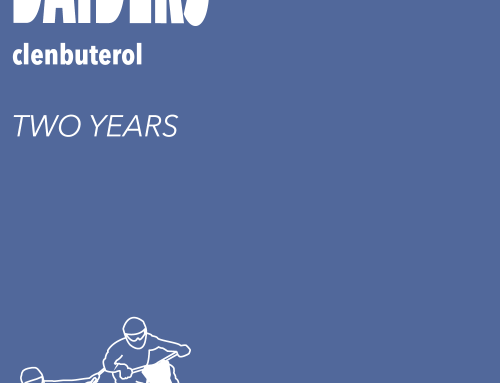The Paolini decision, which was decided by the Union Cycliste Internationale’s (“UCI”) anti-doping tribunal (the “UCI Tribunal”) provides insight into the question of how Prohibited Substances used “recreationally” could be treated under the 2015 World Anti-Doping Code (the “WADC”). “Recreational” drug use was the subject of much debate among stakeholders during the WADC’s 2015 review process and various attempts were made to provide a workable regime for these types of violations. The key sticking point was how to accommodate violations that stakeholders agreed entrain a low level of fault (at least from the perspective of anti-doping), but that nevertheless involve the knowing consumption of a substance, especially within a new 2015 WADC regime that harshly punishes “intentional” violations.
The Single Judge in this case applied by analogy a newly added Comment addressing violations involving “Cannabinoids” to a violation that was accepted to arise from a cyclist’s “recreational” use of Cocaine.
In spite of the matter being decided at the level of an International Federation, as opposed to the Court of Arbitration for Sport (“CAS”), the decision might nevertheless serve as inspiration to CAS panels approaching similar issues, given both the reputation of the Single Judge in the field and the reasoning underlying his approach.
FACTS
In the case at hand, the UCI collected a Sample from Luca Paolini (the “Rider”), early in the morning on the fourth stage of the 2015 Tour de France, i.e. 7 July 2015.[1] The analysis of this Sample revealed the presence of a Cocaine Metabolite (Benzoylecgonine) (the “Adverse Analytical Finding”). Cocaine is not a Specified Substance, and is prohibited only In-Competition. The Rider was notified of the Adverse Analytical Finding three days later on 10 July, at which time a Provisional Suspension was imposed.[2]
UCI ANTI-DOPING TRIBUNAL PROCEEDING
The case was brought before the UCI Tribunal after the Rider and the UCI failed to agree on the Consequences that should flow from the violation.[3] A hearing was held, in persona, on March 4, 2016, with the decision published on 13 April, 2016. The UCI’s Anti-Doping Rules (the “UCI ADR”), which mirror the WADC in relevant parts, were applicable in this dispute.[4]
MERITS OF THE UCI ANTI-DOPING TRIBUNAL JUDGMENT
Neither party disputed that an anti-doping rule violation had occurred. It was also common ground between the parties, and corroborated by expert evidence, that the Prohibited Substance was Used Out-of-Competition and in a “context unrelated to competition”.[5] Thus, the Single Judge applied the special assessment in Article 10.2.3 of the UCI ADR[6] for substances prohibited In-Competition only, but Used Out-of-Competition to hold that the violation was not “intentional”.[7]
The key issue that the Single Judge faced was whether the Rider was able to establish that the violation was committed with either No Fault or Negligence (Article 10.4 of the UCI ADR) or No Significant Fault or Negligence (Article 10.5.2 of the UCI ADR), which would enable the Rider to claim a reduction from the otherwise applicable two-year period of Ineligibility.
The parties disagreed as to whether the Rider’s violation was committed with No Fault or Negligence within the meaning of Article 10.4 of the UCI ADR. In the Rider’s view, he could not have been aware of how long the Cocaine would take to leave his system (i.e. its excretion time) and suggested that its lingering presence in his system could have been at least partially explained by his consumption of alcohol, both in beverage form and in a medication he was taking at the time.[8] The Rider also pleaded for the application by analogy of a Comment to the definition of “No Significant Fault or Negligence” that expressly applied only to Cannabinoids,[9] since both substances are “recreational” drugs.[10] The UCI opposed the application of Article 10.4, primarily on the basis that in its view, it could not be said the Rider exhibited the “utmost caution” needed to call for the application of this provision. In support of its position, the UCI distinguished past CAS cases that did find violations involving Cocaine to entrain No Fault or Negligence by noting that none of the cases referenced involved the intentional ingestion of cocaine.[11] As to the application by analogy of the Cannabinoids comment, the UCI noted only that the comment was of no avail here, since it goes to No Significant Fault or Negligence and not No Fault or Negligence.[12]
The Single Judge rejected the Rider’s arguments on three bases. First, the Single Judge found that the “notion of ‘utmost caution’ is incompatible with an athlete who deliberately and intentionally ingests a substance that is prohibited in-competition,” a finding that the Single Judge found especially apt under the facts of this case.[13] Second, while the Single Judge accepted that this was not a “normal” cocaine case, in which the excretion time for the substance would typically be about two days, with a five-day excretion time at the far end of the range, he did not go so far as to accept the Rider’s explanation that intense alcohol use during this period made the excretion time “completely unpredictable”.[14] Third, he did not appear to give much weight (in this context) to the Rider’s claims that the Use of cocaine occurred during a “very difficult time with psychological problems”.[15] Instead, the Single Judge held that the Rider had “regularly and intentionally consumed a substance that is prohibited in-competition”, which precluded a finding that the violation was committed despite “utmost care”, and by extension, with No Fault or Negligence.[16]
The Single Judge did, however, accept that the Rider committed the violation with No Significant Fault or Negligence pursuant to Article 10.5.2 of the UCI ADR. The primary line of reasoning focused on the question of whether the comment to the definition of No Significant Fault or Negligence that expressly mentions only Cannabinoids can (or should) be applied by analogy to cases involving cocaine. The UCI referred to the wording of the Comment, noted that the legal situation was not clear cur and submitted that it was for the UCI Tribunal to decide on the application to Cocaine in this case.[17]
The Single Judge set the stage for his reasoning by recalling the definition of No Significant Fault or Negligence in the UCI ADR (implementing the mandatory wording of the WADC), commenting on its interpretation, and characterizing violations of the type involved in this case. The definition provides as follows:
No Significant Fault or Negligence: The Rider or other Person’s establishing that his or her Fault or Negligence, when viewed in the totality of the circumstances and taking into account the criteria for No Fault or Negligence, was not significant in relationship to the anti-doping rule violation. Except in the case of a Minor, for any violation of Article 2.1, the Rider must also establish how the Prohibited Substance entered his or her system.
[Comment to No Significant Fault or Negligence: For Cannabinoids, a Rider may establish No Significant Fault or Negligence by clearly demonstrating that the context of the Use was unrelated to sport performance.]
As per the interpretation of the definition, the Single Judge noted that the definition compares an athlete’s behaviour to a “reasonable person” standard, which in CAS case law is generally understood as taking the “clear and obvious precautions which any human being would take” in a specific set of circumstances.[18] Moreover, it is not decisive that a “reasonable person” would not have consumed an addictive substance, since the definition must be considered “in relationship to the anti-doping rule violation”.[19]
In characterizing the anti-doping rule violation, the Single Judge emphasized the unique nature of anti-doping rule violations involving substances prohibited In-Competition only, but Used Out-of-Competition. To the Single Judge, these types of violations wherein the consumption of the Prohibited Substance is not on its own an anti-doping rule violation “in principle” qualify for No Significant Fault or Negligence.[20] As an exception, if an athlete had engaged in “particularly dangerous conduct”, additional precautions must have been taken in order for an athlete to be in a position to establish that a violation was committed with No Significant Fault or Negligence. Two examples provided included situations involving the following: (i) products labelled as performance enhancing, and (ii) products intended for therapeutic medical use.[21]
Taking this logic one step farther, the Single Judge addressed the question as to where “recreational drugs” fall on this spectrum. On one hand, the Single Judge acknowledged that a case could be made for considering violations involving recreational drugs as particularly “dangerous” behaviour since they involve the intentional ingestion of Prohibited Substances.[22] On the other hand, a more nuanced approach to sanctioning these types of violations might be called for given that this conduct “clearly can be disassociated from the sporting sphere of the athlete”.[23] The Single Judge opted for the latter approach, noting that the approach was precisely what the WADC adopted with respect to violations involving Cannabinoids in the Comment to No Significant Fault or Negligence.[24]
Which to the Single Judge, brought him to the core of the issue: Deciding whether the Cannabinoids comment may be applied by analogy to violations involving the social or recreational Use of Cocaine or if the WADC “advocates a dual approach” for consequences of violations involving social or recreational use, depending on whether Cocaine or a Cannabinoid was involved.[25] The Single Judge opted for the former based on two main reasons.
First, in his view, advocating a dual approach for Cocaine and Cannabinoids did not make sense within the structure of the system.[26] In support, the Single Judge noted that Article 10.2.3 provides a special assessment to establish that a violation was not “intentional” in cases involving the recreational use of substances prohibited In-Competition only (like Cocaine), which he considered would be contradictory to then reach the conclusion that an athlete could not seek recourse from Article 10.5.2 (No Significant Fault or Negligence) based on this same recreational Use.[27]
Second, a “dual approach” would fall out of line with the legislative history of the Comment on Cannabinoids.[28] The legislative history can be summarized as follows: The early versions of the 2015 WADC attempted to treat all recreational use of Prohibited Substances in a provision directed at “Substances of Abuse”, without distinguishing the type of substance involved. The Substances of Abuse provision was dropped in the final version of the WADC circulated prior to the Johannesburg Conference, leaving the WADC without an express provision addressing fault for these types of substances.[29] Without such a provision, some stakeholders feared that the 2015 WADC would lead to harsher treatment for violations arising under these circumstance, which was not aligned with the 2015 WADC’s goal of offering more flexibility in circumstances in which athletes could establish that they did not cheat. Just a couple days before the Johannesburg conference, the issue was again tabled, and since time had run out for receiving stakeholder comments, the idea was to insert a provision that would keep changes to the text to a minimum. This sentiment led to the addition of the Cannabinoids comment (which targeted what was considered as the most “relevant” recreational drug use in practice) instead of a more cohesive provision addressing recreational drug use (a possibility that was also discussed).[30]
Concluding that neither the rationale of the WADC 2015 nor the legislative history of the Comment on Cannabinoids would counsel against applying the Comment by analogy to violations involving Cocaine, the Single Judge did so, and found that the Rider was entitled to a reduction for reasons of No Significant Fault or Negligence.[31] Upon doing so, the Single Judge weighed various circumstances of the case to determine where the Rider’s degree of fault fell on the range between 12 and 24 months, finding in the end that 18 months was appropriate.[32]
COMMENT
This decision provides insight to the manner in which hearing panels might treat violations involving substances used in a “recreational” or “social” context under the 2015 WADC. The Single Judge approached the sanctioning of this violation from the vantage point that while the WADA Prohibited List “neither seeks to tolerate or encourage the consumption of drugs”, there is in principle no issue under the WADC if an athlete recreationally consumes Out-of-Competition a substance prohibited In-Competition only, so long as the substance is no longer in the athlete’s system by the time of Competition.[33] From this perspective, the results in this case must be approved to the extent that they show that the new regime capable of meeting the WADC revision goal to provide more flexibility to sanction violations in circumstances where the athlete’s conduct is not directly contrary to the objectives of the fight against doping in sport, or in other words, in circumstances where it is accepted that the athlete did not intend to cheat.
Exclusion of No Fault or Negligence finding
Though this issue was not central to the case, the decision briefly addresses the question of a No Fault or Negligence finding for substances prohibited In-Competition only, but used knowingly Out-of-Competition. The Single Judge stated that the “utmost caution” required for a finding of No Fault or Negligence is “incompatible with an athlete that deliberately and intentionally ingests a substance that is prohibited in-competition”.
While this statement may seem appropriate in the case at hand, it would not be expected that knowing Out-of-Competition Use of a substance prohibited only In-Competition could never qualify for a finding of No Fault or Negligence. In fact, the decision appears to leave the door open for such finding if the hypothesis that a substance might still linger in the Athlete’s body In-Competition was “completely unpredictable” for such athlete. Moreover, the Single Judge’s findings cannot be disassociated from the fact that the Cocaine use in this case was considered to be “regular”, as opposed to an isolated incident.
A parallel can be made in this respect with the question of predictability of excretion times for substance newly placed on the Prohibited List. In the notice on Meldonium issued by WADA in Spring 2016, WADA refers to whether an Athlete “could not reasonably have known or suspected” that the substance would still be present – in a detectable concentration – in his or her body after the effective date of the prohibition, to assess whether a finding of No Fault or Negligence is justified.
Thus, in our view, hearing panels should not exclude a priori a finding of No Fault or Negligence when faced with an Athlete’s defence that the substance was taken in a manner or at a time that is not prohibited, even if the ingestion was deliberate. The relevant elements for determining whether an anti-doping rule violation is realized based on a positive Sample rely on purely objective circumstances (i.e. presence of the Prohibited Substance at the time of Sample collection). By contrast, the assessment of whether disciplinary sanctions are warranted should take into account, among other factors, whether this objective outcome was predictable at all for the Athlete.
Application of the Comment beyond Cannabinoids
The decision opens the door for a broad interpretation and application of the Cannabinoids Comment to fit a number of circumstances that might otherwise call for a two-year – or even four-year – period of Ineligibility. To what extent CAS panels will follow this approach remains to be seen, but the fact that the decision was taken by a CAS arbitrator familiar with the review process that led to the insertion of the Comment into the 2015 WADC, as well as the fact WADA did not appeal the decision, can only give comfort to future panels that might be inclined to apply similar reasoning in cases involving recreational or social use of Prohibited Substances.
A preliminary question that is relevant to the scope of application of the Comment is its legal characterization. The decision did not explicitly address the intended legal force of the Cannabinoids Comment. Its account of the drafting history, and the whole analysis rooted in the possibility to apply the Comment by analogy, could suggest that some form of binding force was envisaged. However, an application by analogy of the Comment is only necessary if this Comment adds something that the hearing panel cannot already grant based on the general regime of the WADC and, additionally, if the Comment also intended to exclude that exceptional status for other substances.
Under the WADC, the hearing panel freely weighs all evidence on the record and appreciates whether the factual circumstances presented by the athlete merit a finding of No Fault or Negligence. Nothing prevents a hearing panel from considering that an Athlete demonstrating Use unrelated to sports performance deserves that legal appreciation, and this would be true even in the absence of any express Comment to that effect. The issue at stake in the Comment is thus not so much whether Athletes ‘may’ obtain a finding of No Fault or Negligence by demonstrating Use unrelated to sports performance (which they always can), but whether the hearing panel may refuse such finding.
This aspect of the Comment may evoke parallels with a legal presumption. The comment instructs hearing panels to reach a legal conclusion (i.e. No Significant Fault or Negligence) based on the finding of a premise fact (i.e. that the context was unrelated to sport performance). The resemblance is, however, attenuated by the lack of use of the term “presumption” in the Comment (as compared to other locations in the WADC that do use the term[34]) and correlate lack of indication as to whether the “presumption” would be rebuttable or irrebuttable. This similarity is further diminished when one considers the Comment’s location within the WADC, i.e. a comment within the definitions section of the WADC, rather than a full-fledged provision located within the sanctioning regime.[35]
Thus, the Comment appears to serve more as an aid to interpretation and a guideline to the Athlete on how to proceed to seek a No Significant Fault or Negligence finding, than a binding legal instruction to a hearing panel. In other words, it can be considered as offering an example of the type of recreational Use that qualifies for No Significant Fault or Negligence. Given both the status given to legal Comments in the WADC and the lack of clear intent to make the assessment binding on the hearing panel, the Single Judge’s ‘by analogy’- reasoning in the decision can be seen as a statement that, in his eyes, a finding of No Significant Fault or Negligence was warranted for the specific fact pattern of the case, rather than the application of a formal rule or presumption implied into the WADC.
On a practical note, even if only considered as an aid to interpretation, the form of the Comment might itself serve as a barrier to creating a truly coherent regime for recreational substances. Since Signatories need not incorporate Comments to the WADC directly in their anti-doping rules, and are free to merely insert an express reference (Article 23.2.2 of the WADC), the Cannabinoids Comment will not necessarily appear in an Anti-Doping Organization’s rules. The fairness of the regime and the pursuit of harmonization would be enhanced in these circumstances if Anti-Doping Organizations took steps to ensure that athletes who could potentially benefit from this Comment were made aware of its existence, as it is foreseeable that it might be overlooked under these circumstances.
Interpretation of “context of the Use was unrelated to sport performance”
As to the interpretation of the Comment itself, the requirement is that a Rider or other Person must “clearly demonstrate” that the “context of the Use was unrelated to sport performance”.
Unlike the special assessment for proving the non-intentional character of substances prohibited In-Competition only, the Comment does not expressly require that Use occurred Out-of-Competition. In the case at hand, the Single Judge appeared to consider both the nature (i.e. recreational) and the timing of the Use (i.e. Out-of-Competition). The Single Judge emphasized that Use in a “recreational or social” context (neither of which are defined under the WADC regime) can clearly be disassociated from the “sporting sphere of the athlete.” After explaining the purpose of the Cannabinoids Comment was to add a provision that (at least) dealt with the “most relevant recreational drug use in practice”, the Single Judge noted that it was not disputed that the Cocaine was “consumed unrelated to his sporting performance”, which was corroborated by the expert testimony submitted in this case that went to the timing of the use. The decision hence brings little insight to the question of the relative importance of the nature of the Use versus its timing. It does not, however, exclude the possibility that even In-Competition Use could also entrain No Significant Fault or Negligence if the lack of relation to sports performance can be established.
The issue of standard of proof remains open. The language of the Cannabinoids Comment raises questions as to whether the requirement that the lack of relationship with sport performance must be established to a higher standard of proof since the Comment requires this relationship to be “clearly demonstrated”. In the case at hand, there was no question that the Use occurred outside of a sporting context, thus even if this language is intended to heighten the standard of proof required, the facts of this case would likely have met the higher standard. It should be noted, however, that interpreting “clearly demonstrated” as calling for a higher standard of proof would be contrary to the express requirement of Article 3.1, which declares the standard of proof to be on the balance of probability where the WADC places the burden of proof on the Athlete.[36]
[1] Paolini decision at [3].
[2] Paolini decision at [5].
[3] Paolini decision at [12].
[4] Paolini decision at [22].
[5] Paolini decision at [30].
[6] Article 10.2.3 in fine: “An anti-doping rule violation resulting from an Adverse Analytical Finding for a substance which is only prohibited In-Competition shall not be considered intentional if the substance is not a Specified Substance and the Rider can establish that the Prohibited Substance was Used Out-of-Competition in a context unrelated to sport performance.”
[7] Paolini decision at [30].
[8] Paolini decision at [32].
[9] Comment to definition of No Significant Fault or Negligence, Appendix 1: Definitions of the UCI ADR: “For Cannabinoids, a Rider may establish No Significant Fault or Negligence by clearly demonstrating that the context of the Use was unrelated to sport performance.”]
[10] Paolini decision at [32].
[11] Paolini decision at [33]
[12] Paolini decision at [33].
[13] Paolini decision at [34].
[14] Paolini decision at [35].
[15] Paolini decision at [37].
[16] Paolini decision at [38].
[17] Paolini decision at [41].
[18] Paolini decision at [43], quoting CAS [20.7.2005] 2005/A/847, no. 7.3.6.
[19] Paolini decision at [43].
[20] Paolini decision at [44], quoting CAS 2013/A/3327&3335.
[21] Paolini decision at [45].
[22] Paolini decision at [46].
[23] Paolini decision at [46].
[24] Paolini decision at [46].
[25] Paolini decision at [47].
[26] Paolini decision at [47].
[27] Paolini decision at [48].
[28] Paolini decision at [47].
[29] Paolini decision at [47]
[30] Paolini decision at [48].
[31] Paolini decision at [48].
[32] Paolini decision at [49].
[33] Paolini decision at [43].
[34] See, e.g., Article 10.2.3 of the WADC.
[35] Article 24.2 of the WADC provides that comments are to “be used to interpret these Anti-Doping Rules,” which implies a lack of binding force.
[36] See Rigozzi A, Haas U, Wisnosky E and Viret M, Breaking down the process for determining a basic sanction under the 2015 World Anti-Doping Code, Int Sports Law J (2015) 15:348, p. 36.







Leave A Comment